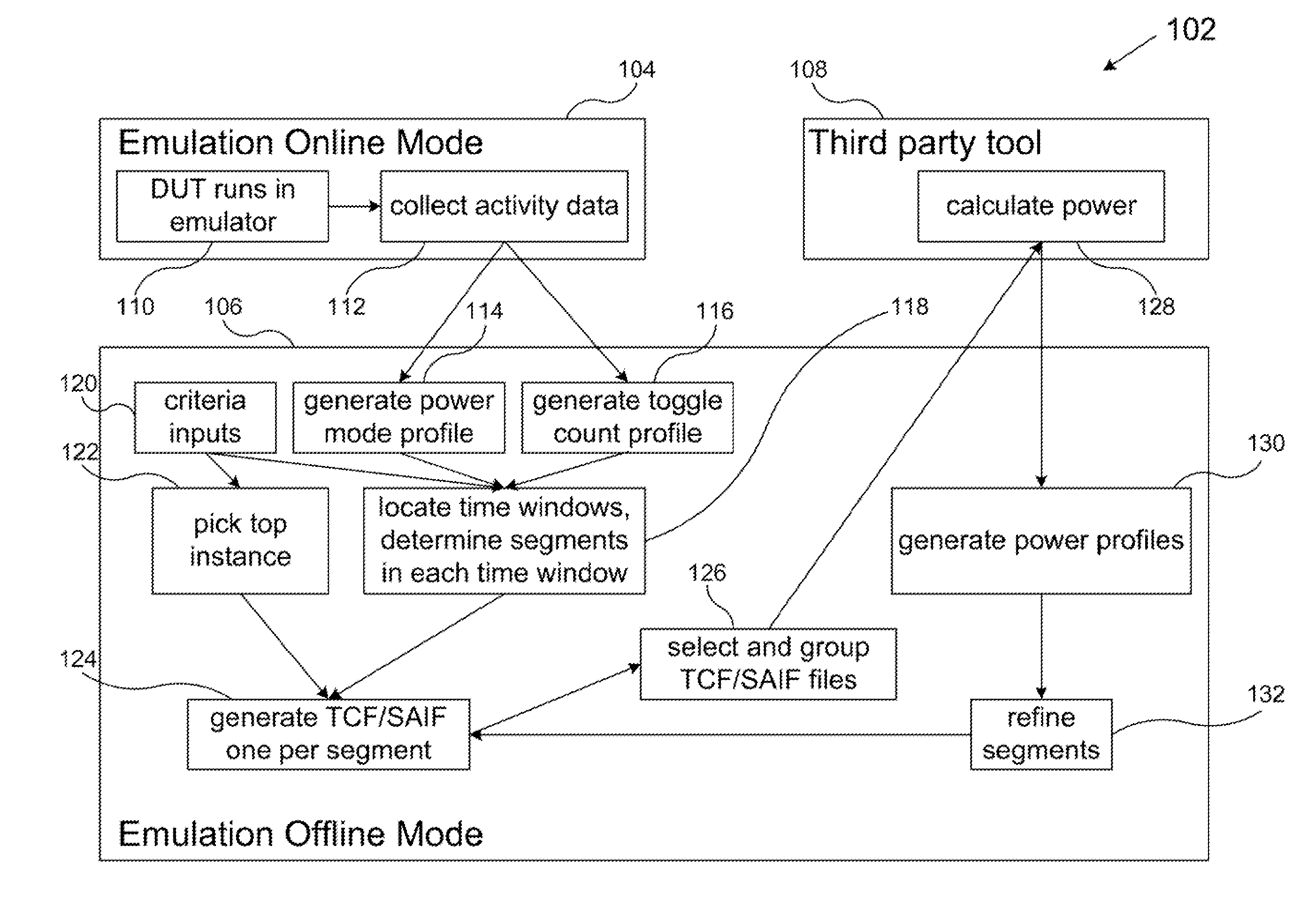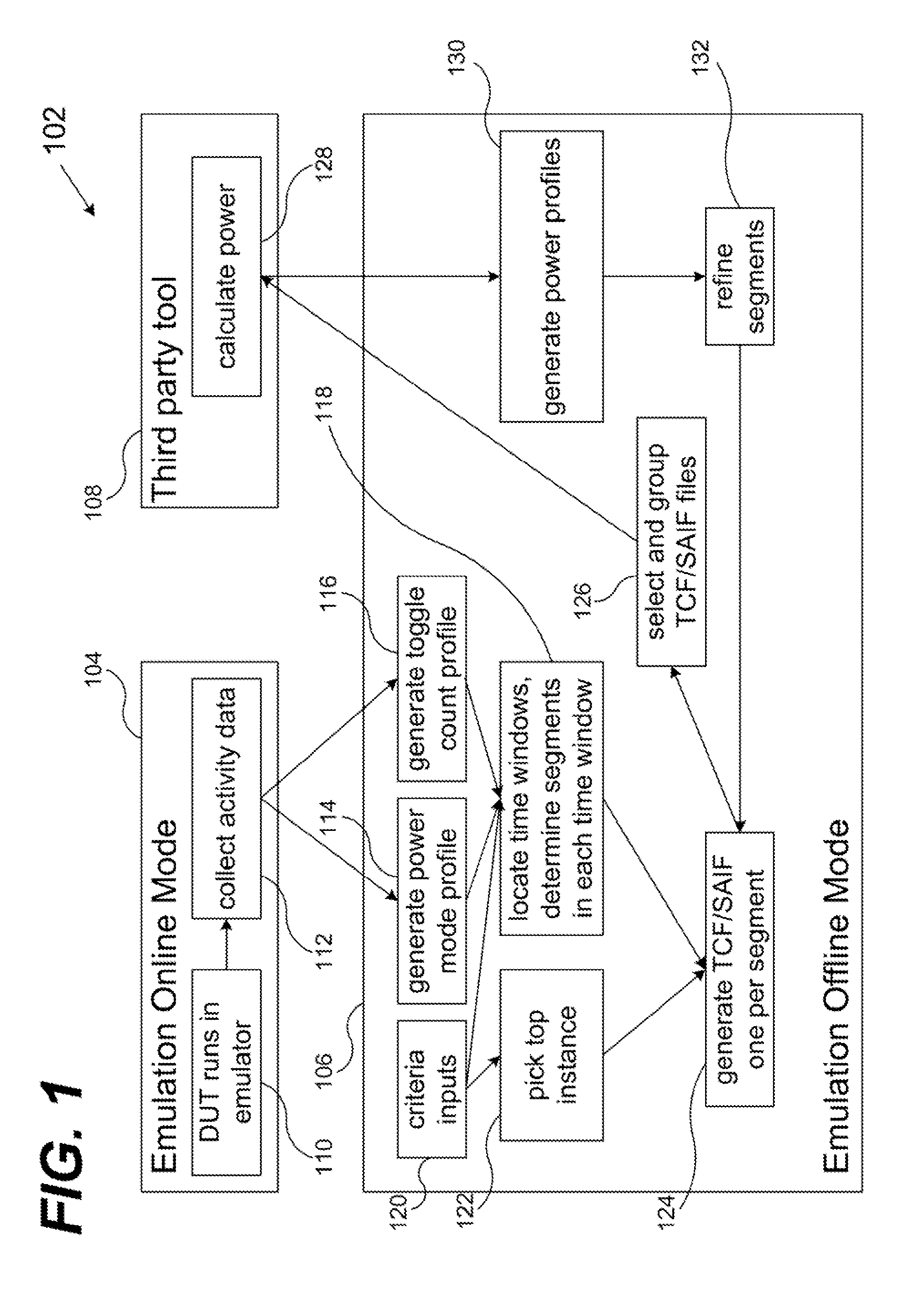Peak power detection in digital designs using emulation systems
a technology of emulation system and power detection, applied in the direction of electric/magnetic computing, analogue processes for specific applications, instruments, etc., can solve the problems of design constraints, the conventional emulation system has not responded to these challenges, and the software simulator cannot achieve anything
- Summary
- Abstract
- Description
- Claims
- Application Information
AI Technical Summary
Benefits of technology
Problems solved by technology
Method used
Image
Examples
Embodiment Construction
[0039]FIG. 1 shows structural details for a method 102 of dynamic power analysis in an emulation system according to an embodiment of the present invention. Steps or aspects of the method 102 are separated into phases of operation including an emulation online mode 104, an emulation offline mode 106, and external or third-party tools 108 for power calculations.
[0040]The third-party tools 108 can operate according to standard models for power consumption. In general, the total chip power consumption is the sum of internal power and leakage power for all the instances and all the net power:
Ptotal=∑lnPinternal+∑lnPleakage+∑lmPnet(1)
[0041]The internal power consumption of each component can be calculated based on models (e.g., from a technology library) and switching activity captured by TCF (Toggle Count Format) or SAIF (Switching Activity Interchange Format) data:
Pinternal=∑per_arc(TRarcij×Φ(Si,Cj))+∑per_pin(TRi×Φ(Si))(2)
[0042]In this formula, TR is the effective toggle rate of an arc...
PUM
 Login to View More
Login to View More Abstract
Description
Claims
Application Information
 Login to View More
Login to View More - R&D
- Intellectual Property
- Life Sciences
- Materials
- Tech Scout
- Unparalleled Data Quality
- Higher Quality Content
- 60% Fewer Hallucinations
Browse by: Latest US Patents, China's latest patents, Technical Efficacy Thesaurus, Application Domain, Technology Topic, Popular Technical Reports.
© 2025 PatSnap. All rights reserved.Legal|Privacy policy|Modern Slavery Act Transparency Statement|Sitemap|About US| Contact US: help@patsnap.com



